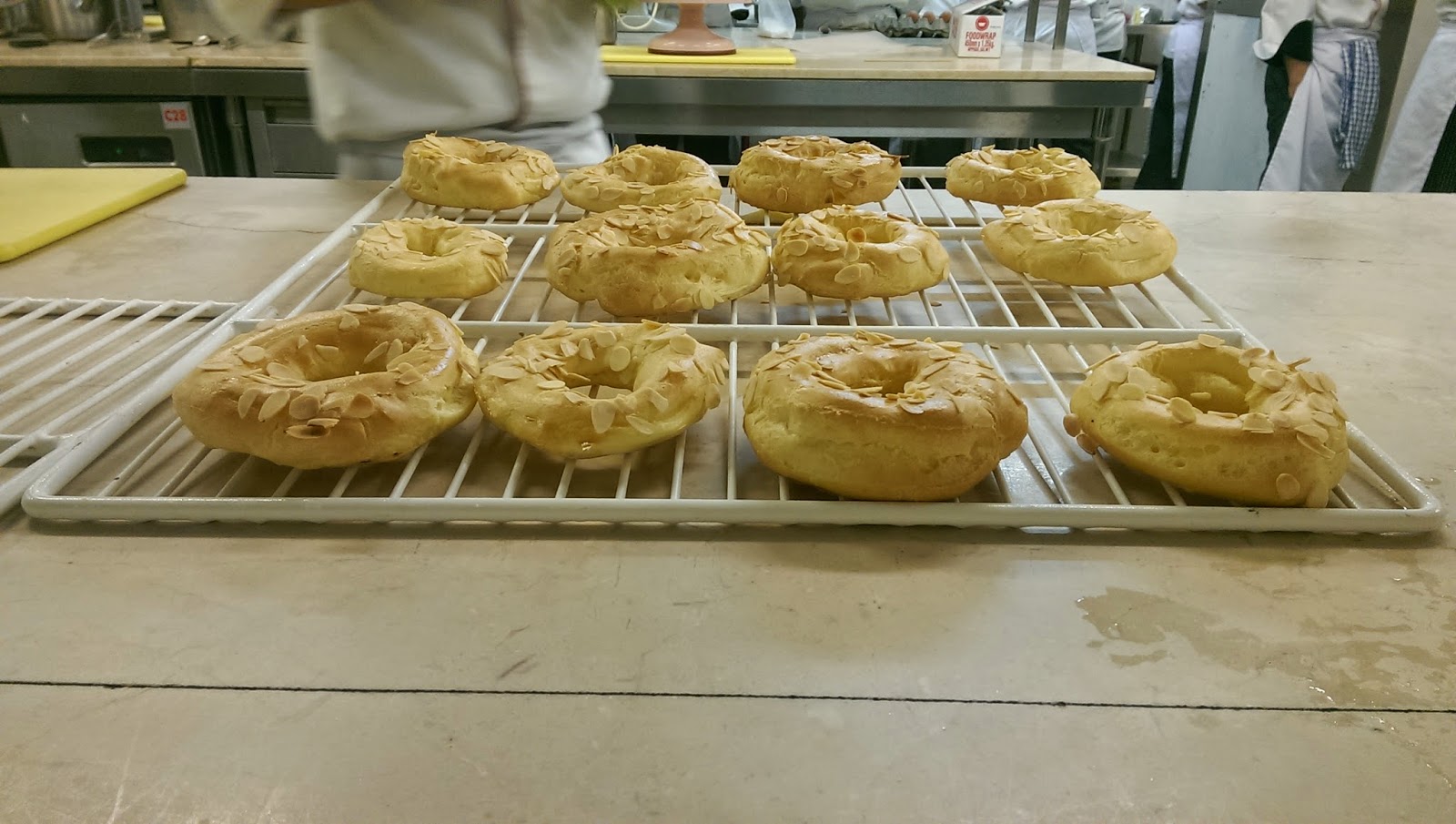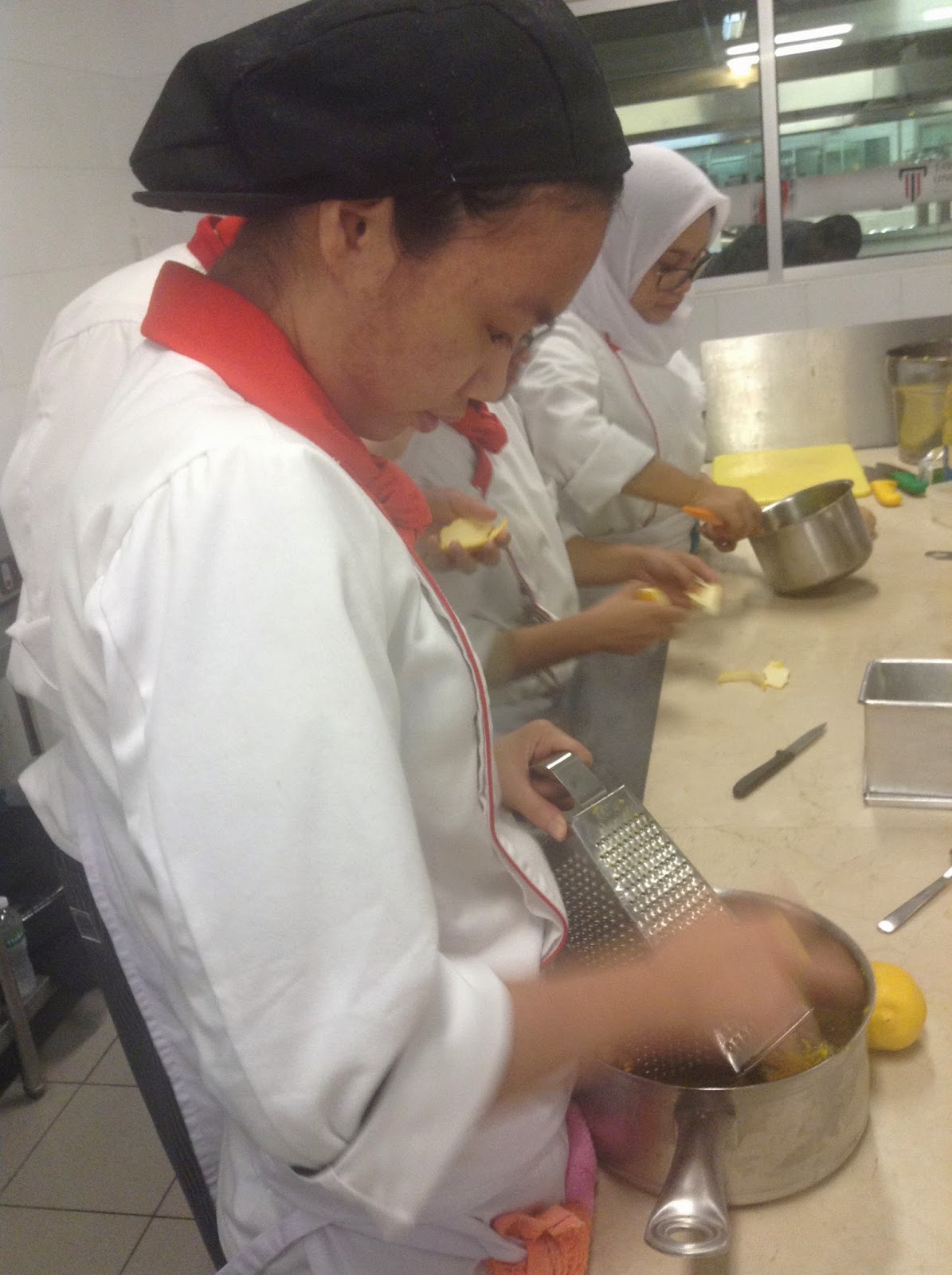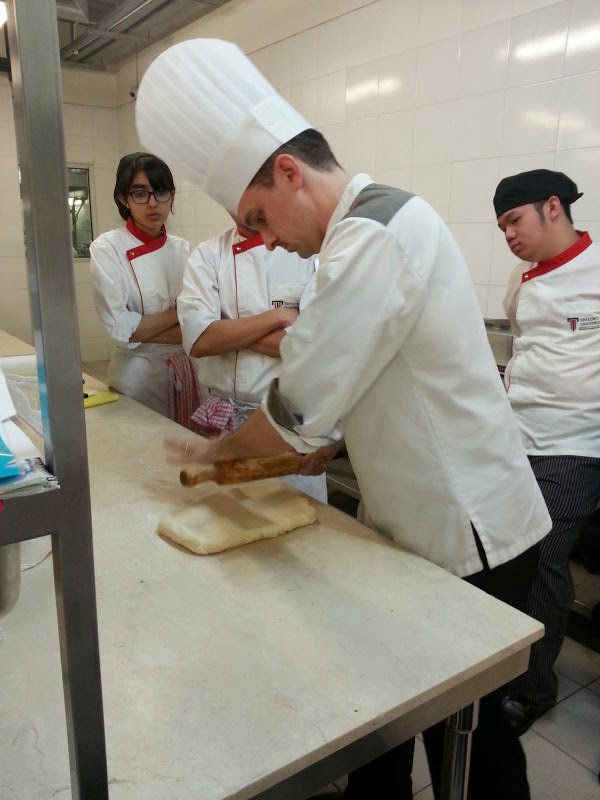This week DC 9 Group 5 was making
choux pastry with Chef Jean Michel!
Choux pastry is a
light pastry dough used to
make profiteroles, croquembouches, éclairs,
French crullers, beignets, St. Honoré cake, and gougères.
It contains only butter, water, flour, and eggs.
Like Yorkshire Pudding or David Eyre's pancake, instead of
a raising agent it employs high moisture content to create steam
during cooking to puff the pastry.
Choux pastry is
usually baked but for beignets it is fried. In Spain and Latin
America, churros are made of fried choux pastry, sugared and dipped
in a thin chocolate blancmange for breakfast. In Austrian
cuisine, it is also boiled to make Marillenknödel, a sweet
apricot dumpling; in that case it does not puff, but remains relatively
dense. They are sometimes filled with cream and used to make cream puffs or
éclairs.
Now, lets start making pastry!
First things that you need to
make the choux dough are prepare water, butter, sugar, salt, strong flour, and
eggs.
Melt the
butter into simmering water, add a bit of salt.
And then
remove from heat add in strong flour and mix it using wooden spoon until it
forms into a dough.
Leave it cool for about 10 minutes before
put in the eggs to avoid the eggs become cooked.
Transfer dough into bowl and add in eggs
one by one, or two by two in our case because we made twice as much
dough
Mix it until it gets just the right
consistency, or like chef jean-michel said,
"until it hangs off the spoon like a
tear"
Grab a piping bag and fill it with the choux dough, pipe it
to tray that was covered with parchment paper.
Before baking, apply egg wash.
Make the filling and topping.
*top left: chantilly, top right: pastry cream, bottom:
chocolate ganache*
Bake for 30 minutes at 200 degrees celcius. DO NOT OPEN THE
OVEN UNTIL YOUR CHOUX IS DONE BAKING! OR IT WILL NOT RISE!
After baking, fill the choux with the filling and top it
with almond flakes or ganache.
Well, that’s all you have to do for making the choux pastry!
Enjoy and have a good day :)


.jpg)
.jpg)
.jpg)
.jpg)
.jpg)
.jpg)
.jpg)



.jpg)




















































































